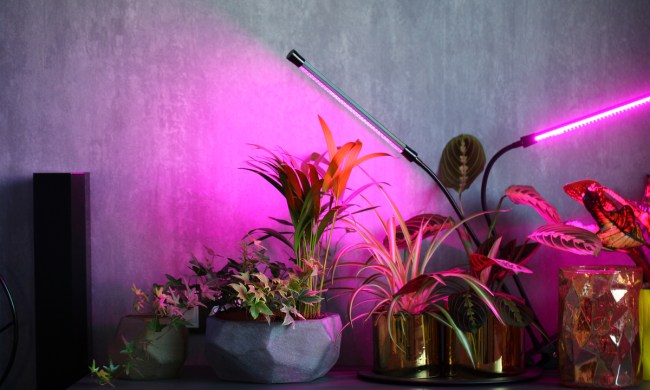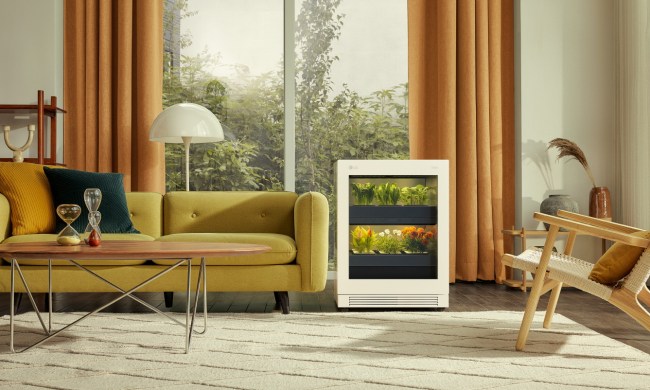Houseplants are a great way to add a small piece of nature to your indoor space, and they can even provide you with some great health benefits. Having a large indoor plant, like a small bush or tree, adds an incredible statement piece and focal point in the room, and the ever-popular fiddle-leaf fig is a great option. With these few tips, you’ll be able to grow a bright and healthy fiddle-leaf fig and enjoy the benefits of this large indoor plant for years to come.
Common issues with fiddle-leaf figs

Named for its large, violin-shaped leaves, this rainforest plant is a bit temperamental, requiring close attention in its care routine. That being said, with a bit of tender loving care, they’ll last for years in your space.
While adored by indoor plant parents, fiddle-leaf figs develop health issues when the indoor conditions are not ideal.
Losing leaves
When you first bring your plant home, the change in climate can stun it, since it’s likely been growing in a warm, humid greenhouse. If it loses a few leaves when you bring it home, don’t worry. It’ll be fine in a week or two once it’s acclimated to your home’s climate. If it continues to lose leaves after that point, be sure it’s in a location with proper light and that you’re providing it with enough water.
Leaves browning or yellowing
The most likely culprit of brown or yellow spots on the leaves of your fig is overwatering. Check the soil, and if it’s wet, hold off on watering for a while until the soil dries out completely. Another possible culprit is too little light. Try moving your fig to a brighter area near a window for a while.
Leaf edges browning and curling
If the browning on your leaves is only on the edges and these edges are dry and curling in, you’re probably not giving your fig enough water. Give it a good soak and then let the top couple of inches of soil dry out before watering again.
Fiddle-leaf fig care

While these big houseplants need specific care, the routine for their maintenance isn’t all that vigorous.
How much light does a fiddle-leaf fig need?
These plants require lots of bright light in order to flourish. Place your fig next to east or south-facing windows so it can get all the sun it needs. While it can handle a few hours of direct sunlight at a time, full days in the sun can scorch its leaves, so don’t leave your fig next to large ceiling-to-floor windows. After all, this plant is accustomed to living under a rainforest canopy.
Temperature and humidity conditions
Since the fiddle-leaf fig originated in the rainforest, it flourishes in warm, humid conditions. The average temperature and humidity of homes is a fine level for these figs, but if you live in a dry climate, consider running a humidifier in the room or misting the leaves of the plant with water every week or so. Be sure to keep it away from air vents to avoid extreme changes in temperature.
How to water appropriately
Fiddle-leaf figs need moist soil, but they should dry out for a short time between waterings. Only water your fig when the top couple of inches are completely dry. However, don’t let it dry out around the roots. Consider using a soil probe to check moisture levels deep down in the plant’s root system. You’ll know your plant is in need of water if the leaves start to droop and become less stiff.
Fertilizing your fig
Your fig only needs fertilizer in the spring and summer. It’s best to use slow-release fertilizer pellets or manually fertilize once a month with standard houseplant fertilizers. Be sure to follow the package instructions for diluting and application.
When to repot your fiddle-leaf fig
You should only repot your fig every oone and a half to two years, and you should do so in the spring or summer since it’s at its strongest during warmer seasons. Increase the size of the pot by only a couple of inches if you want your plant to continue to grow. Use the same pot if you want to keep it the same size.
Can I leave my fiddle-leaf fig outside in the summer?

Yes, you can leave your fiddle-leaf fig outside during the summer, provided you take some precautions. These plants thrive in warm, humid conditions similar to their native tropical environment. However, it’s crucial to gradually acclimate them to the outdoor conditions to avoid shock. Start by placing the fiddle-leaf fig in a shaded area, gradually increasing its exposure to direct sunlight over a week or two. Ensure the plant is protected from strong winds and sudden temperature drops. Regular watering is essential, as outdoor conditions can dry the soil faster than indoors.
Indoor plants are a great addition to your interior design, and a big statement plant like the fiddle-leaf fig is the perfect addition to your elegant decor. While it’s a bit finicky when it comes to care and maintenance, this fig variety is gorgeous, elegant, and will last for years to come if you follow these tips and tricks.




